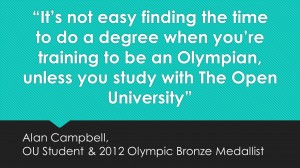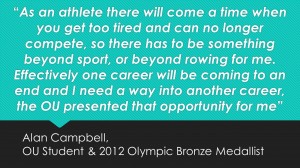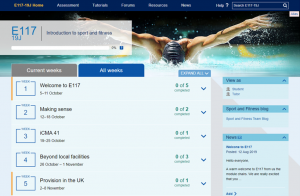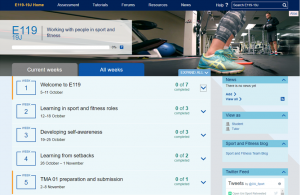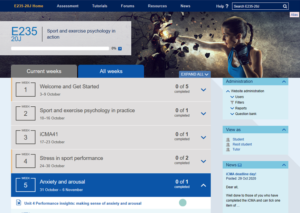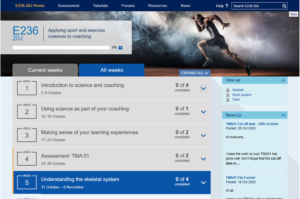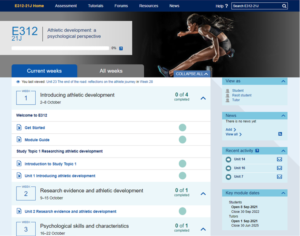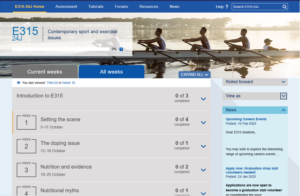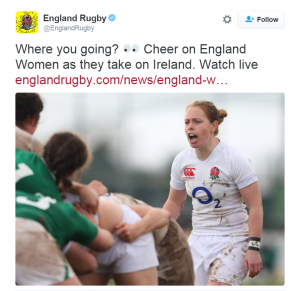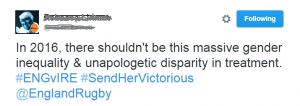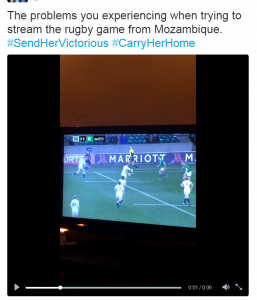By Candice Lingam-Willgoss
Sport, exercise and physical activity hold different significance and meaning to every individual, whether it is a part of your daily life, something you watch from a distance or something all-consuming that defines who you are. Maintaining a regular routine of exercise is frequently cited as being highly effective for prevention and treatment of many chronic diseases and unequivocally improves cardiovascular health (Sharkey and Gaskill, 2007). However, with ever growing participation in ultra-endurance events all over the world research has started to look in more detail at the impact this type of exercise has on the human body (IAU Ultra Marathon, 2013). Ultra-endurance is the term given to events that last for over 6 hours, with the term ultra-running being applied to distances over a marathon distance of 26.2 miles (Wortley and Islas, 2011). People seem to seek out these ultra-type events in order to test themselves, with Hinton (2016) a former double ironman competitor reporting ‘Ironman didn’t break me, mentally or physically. I wanted to know my limits’ and while this form of challenge carries with it a huge sense of achievement and success, is there a downside to it all?
Watching the actor/comedian Eddie Izzard take on yet another ultra-marathon event in the name of Sport Relief is a prime example of the potential downside to endurance competition. Izzard is currently embarking on the challenge of 27 marathons in 27 days, and while he has already earned the title Marathon Man following his 2009 achievement of 47 marathons in 51 days this current challenge (one he failed to complete in 2012) carries with it the additional factor of 30 degree heat (Izzard, 2016). Izzard doesn’t look well, he was forced to take a rest day on day 5, and now three days later the strain on his body is starting to visibly show (BBC, 2016). The warning 4 years ago was that if he didn’t stop he would die (Izzard, 2016), but is the challenge worth the potentially permanent damage he could do to his body?
Physical Effects
Many of us have experienced delayed onset of muscle soreness (DOMS) which tends to occur 24 hours after exercise (Sharkey and Gaskill, 2007). Although uncomfortable DOMS will probably be the least of Izzard’s worries. Endurance events put increased stress on the body, in particular on the immune system making a person vulnerable to risk of infection (Walsh, et al, 2011). Specifically, a substantial body of work accumulated over the last 20 years has shown that intense endurance exercise, such as running, swimming, cycling or rowing results in significant changes in white blood cell count (Lancaster and Febbraio, 2016). While exercise is universally shown to have health benefits (up to one hour daily), researchers looking at long distance races have cautioned that as well as inhibiting the immune system this form of exercise may lead to overload of the heart atria and right ventricle which could ultimately make someone more prone to unfavorable heart arrhythmias later in life (O’Keefe, et al, 2012).
That said there is much contrary evidence to support that those who do participate in ultra-sport in a measured manner are very happy and due to the slower paced and reduced impact compared to elite marathon runners actually get far less overuse injuries (Wortley and Islas, 2011). Research by Krouse et al, which looked at female ultra-runners also concluded that they tended to have much better mental health, and psychological coping strategies (2011).
Age
An interesting factor that could actually be in Izzard’s favour is his age, research into this area has found that being over 40 can be a huge advantage when it comes to endurance sport. Knechtle et al (2012) found that when looking at results from the 100km ultra-marathon the percent of finishers significantly increased for the 40–49 and the 50–59-year age groups indicating that this is an optimum age to compete in these type of events. This was also echoed by Hoffman and Krishnan, (2014) who found that runners over 40 tended to have a lower occurrence of injury. Another key benefit of age is that it comes with a higher level of resolve, older athletes tend to have more mental strength than younger athletes (Li, 2016 cited in BBC, 2016). So while we see Izzard ‘physically wilting’ his determination is at an all time high, giving him the willpower to push on (BBC, 2016).
What’s clear is that endurance sport is a way of life, and that ultra-athletes are a unique subculture of people who are striving to challenge themselves both mentally, physically and emotionally. I am constantly in awe of many of my friends who take on such extreme and challenging competitions, whether they are competing in 24 hour running races or 250km treks across the desert. Their motives are pure, as Varvel a multiple ultra-competitor sums up, saying there is a sense of ‘self-fulfilment’ and these varied experiences are seen as ‘life-affirming’ (2016). The primal desire to be at one with nature and bond with others in the face of adversity are all needs that are met by the world of ultra-racing.
References
BBC. (2016). How will 27 marathons affect Eddie Izzard. BBC News. Available at http://www.bbc.co.uk/news/magazine-35599544. Accessed 28th February 2016.
BBC, (2016). Marathon Man. Available at http://www.bbc.co.uk/bbcthree/tag/marathon-man . Accessed 1st March 2016.
Hinton, L. (2016) Personal Communication. 24th February 2016.
Hoffman, M.D. and Krishnan, E. (2014). Health and Exercise-Related Medical Issues among 1,212 Ultramarathon Runners: Baseline Findings from the Ultrarunners Longitudinal TRAcking (ULTRA) Study. PLOS. 10. Available at http://journals.plos.org/plosone/article?id=10.1371/journal.pone.0083867. Accessed 29th February 2016
IAU Ultra Marathon. (2013), available at http://iau-ultramarathon.org. accessed 1st March 2016
Izzard, E. (2016). Marathon Man. Available at http://www.huffingtonpost.co.uk/eddie-izzard/eddie-izzard_b_9328140.html. Accessed 1st March 2016.
Knechtle, B., Rust, C.A., Rosemann, T. and Lepers, R. (2012). Age-related changes in 100-km ultra-marathon running performance. Age. 34 (4), 1033-1045.
Krouse, R.Z., Ransdell, L.B., Lucas, S.M. and Pritchard, M.E. (2011). Motivation, Goal Orientation, Coaching and Training Habits of Women Ultrarunners. Journal of Strength and Conditioning Research. 25 (10), 2835-2842.
Lancaster, G.I. and Febbraio, M.A. (2016). Exercise and the immune system: implications for elite athletes and the general population. Immunology and Cell Biology. 94. 115-116.
O’Keefe, J.H., Patil, H.R., Lavie, C.J. et al. (2012). Potential adverse cardiovascular effects from excessive endurance exercise. Mayo Clinic Proceedings, 87(6), 587-595.
Sharkey, B.J. and Gaskill, S.E. (2007) Fitness and Health. Champaign. Human Kinetics
Varvel, M. (2016). Personal Communication. 24th February 2016.
Walsh, N.P., Gleeson, M., Shepard, R.J. (2011). Position Statement Part One: Immune function and exercise. Exercise Immunology Review, 17, 6-63
Wortley, G. and Islas, A.A. (2011). The problem with ultra-endurance athletes. British Journal of Sports Medicine. 45 (14), 1085.
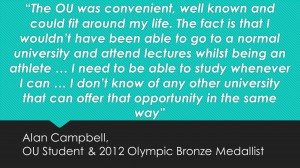 The OU was convenient, well known and could fit around my life. The fact is that I wouldn’t have been able to go to a normal university and attend lectures whilst being an athlete. My life involves attending training camps around the world and I’ve got a family at home, so I need to be able to study whenever I can and not when someone else tells me to study. I don’t know of any other university that can offer that opportunity in the same way and at the same level.
The OU was convenient, well known and could fit around my life. The fact is that I wouldn’t have been able to go to a normal university and attend lectures whilst being an athlete. My life involves attending training camps around the world and I’ve got a family at home, so I need to be able to study whenever I can and not when someone else tells me to study. I don’t know of any other university that can offer that opportunity in the same way and at the same level.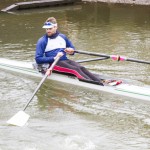 I’ve had to contact the tutors previously for extensions, which I’ve fully utilised, and sometimes for a re-mark. What I like about the OU tutors is that they haven’t all come from a purely academic background, they are from business backgrounds and a lot of them still work full time in their field and the OU is part time for them. I’ve found whenever I’ve asked them questions related to my course they are talking from personal experience too – this is something I’ve always found much more helpful.
I’ve had to contact the tutors previously for extensions, which I’ve fully utilised, and sometimes for a re-mark. What I like about the OU tutors is that they haven’t all come from a purely academic background, they are from business backgrounds and a lot of them still work full time in their field and the OU is part time for them. I’ve found whenever I’ve asked them questions related to my course they are talking from personal experience too – this is something I’ve always found much more helpful.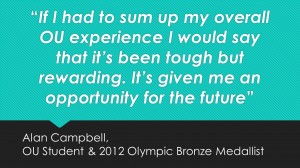 If I had to sum up my overall OU experience I would say that it’s been tough but rewarding. It’s given me an opportunity for the future.
If I had to sum up my overall OU experience I would say that it’s been tough but rewarding. It’s given me an opportunity for the future.
